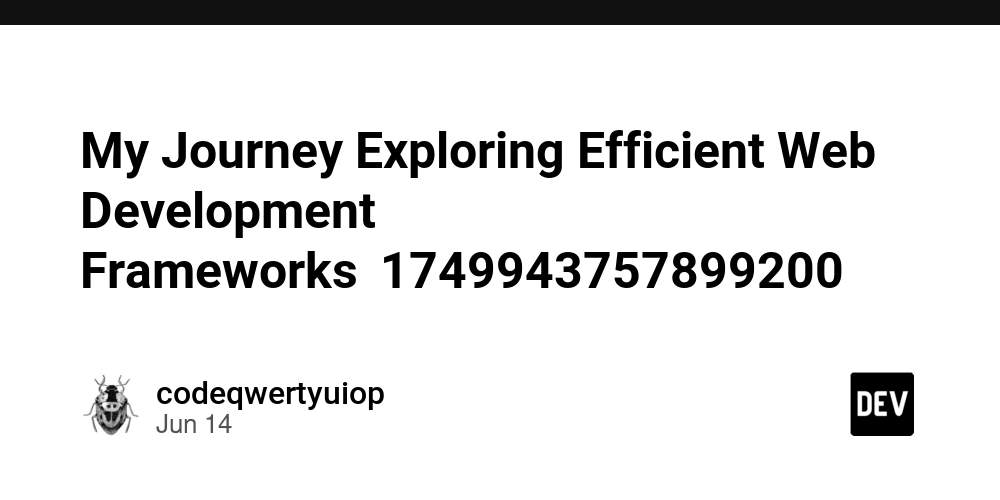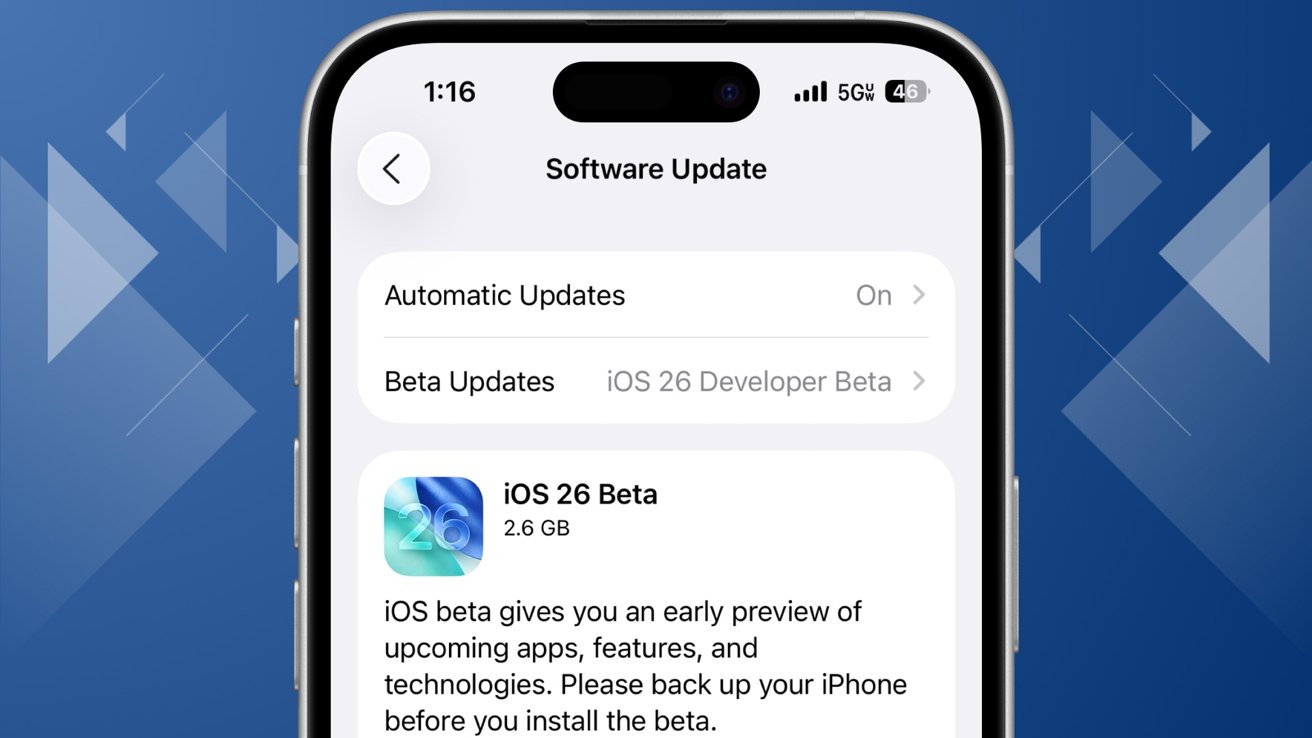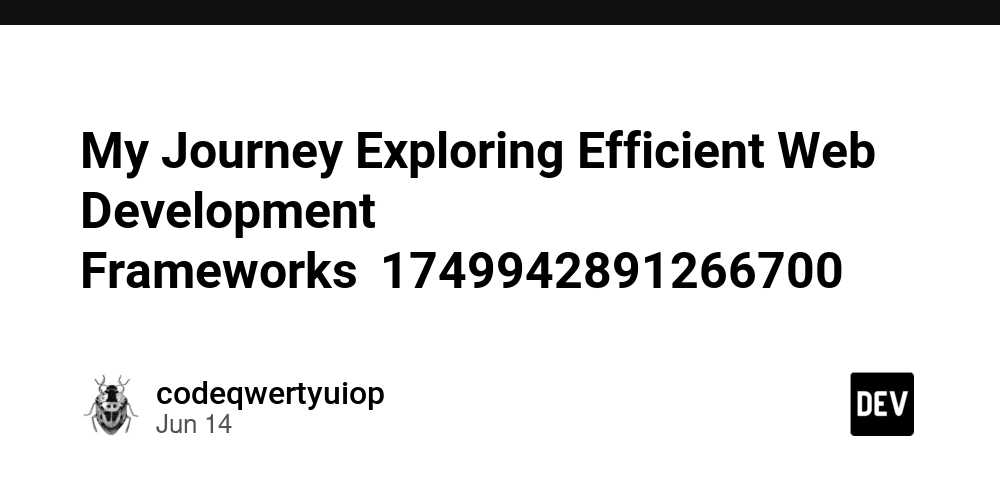My Journey Exploring Efficient Web Development Frameworks(1749943757899200)
As a third-year computer science student, I often found myself grappling with the sluggishness of web applications. While textbooks painted pictures of efficiency, the reality of complex, real-world projects frequently led to frustration. My perspective on "efficiency" and "elegance" in web development shifted dramatically after I stumbled upon a particular open-source project. Initially, my expectations were modest. The market is saturated with frameworks, and for a new contender to make a mark, it needs to offer something truly exceptional. However, as I delved into its design documents—which were notably concise and focused—and experimented with its sample projects, which launched swiftly and consumed minimal resources, a gut feeling told me this could be the solution I'd been searching for. Peak Performance: Understated Power Performance is a cornerstone for any web framework. In my prior experiences, achieving high performance often came at the cost of development efficiency and code readability, involving convoluted asynchronous logic and manual memory management. This framework, however, managed to strike an artful balance between these aspects. Its core philosophy seems to be "simplicity is the ultimate sophistication." Constructed upon an advanced asynchronous non-blocking I/O model and an optimized event loop, it lays a robust foundation for high-performance operations. When I developed a campus forum API to simulate high-concurrency scenarios, it demonstrated a nearly 70% improvement in QPS (Queries Per Second) and reduced the average response time by half compared to a framework I had used previously. For someone keenly focused on user experience, this was a thrilling outcome. Its resource management was equally impressive. Throughout stress tests, memory usage remained consistently low, and CPU utilization was stable. This efficiency stems from its intelligent coroutine scheduling and effective memory management strategies. It doesn't chase speed at the expense of stability but rather aims for sustainable high performance. As an architect once wisely noted, "True performance is sustained composure, not just a momentary burst." Smooth Experience: Unadulterated Creation If performance represents the hard power of a framework, then the development experience is its soft power, directly impacting developer satisfaction and project timelines. This framework excelled in this domain as well. Its API design is remarkably concise, intuitive, and expressive, offering a gentle learning curve. As a student, I was able to begin writing functional modules within a matter of hours, relying solely on the official documentation, which was clear, comprehensive, and of high quality. This ease of adoption is a testament to its well-abstracted yet flexible interfaces and a deep understanding of the developer's mindset. Modularity and extensibility are thoughtfully designed. It provides elegant, out-of-the-box solutions for common needs such as logging, parameter validation, and authentication. It leverages a powerful macro system, a feature popular in languages that prioritize efficiency, to generate code at compile time. This significantly reduces boilerplate and enhances code reusability. Defining a RESTful API endpoint, for instance, might require only a few lines of code, with the framework adeptly handling routing, request parsing, and response serialization. I also appreciated its support for modern web trends, including native WebSocket capabilities. When tasked with building a real-time campus event notification system, its WebSocket module proved to be both easy to integrate and highly performant, facilitating bidirectional communication without the need for additional external libraries. This is a significant advantage for agile development methodologies and maintaining a unified technology stack. A Quiet Comparison: Discerning the Truth Throughout my studies, I've encountered a multitude of web frameworks. Some boast vast ecosystems, others offer convenient Object-Relational Mappers (ORMs), or excel in specific niche areas. However, this "unsung hero" impressed me the most with its exceptional balance between raw performance and developer-centric experience. For high-concurrency applications, developers often find themselves needing to fine-tune thread pools, integrate message queues, or implement complex caching mechanisms. This framework, with its robust underlying architecture, frequently allows developers to concentrate primarily on business logic. Its speed is a product of sophisticated design, not achieved by sacrificing code elegance. While some frameworks are straightforward to begin with, they can become restrictive as projects scale, often leading to bloated and unwieldy codebases. This framework, with its flexible design philosophy and effective use of metaprogramming, consistently offers concise and maintainable solutions, making the code feel more "alive" and adaptable. Future

As a third-year computer science student, I often found myself grappling with the sluggishness of web applications. While textbooks painted pictures of efficiency, the reality of complex, real-world projects frequently led to frustration. My perspective on "efficiency" and "elegance" in web development shifted dramatically after I stumbled upon a particular open-source project.
Initially, my expectations were modest. The market is saturated with frameworks, and for a new contender to make a mark, it needs to offer something truly exceptional. However, as I delved into its design documents—which were notably concise and focused—and experimented with its sample projects, which launched swiftly and consumed minimal resources, a gut feeling told me this could be the solution I'd been searching for.
Peak Performance: Understated Power
Performance is a cornerstone for any web framework. In my prior experiences, achieving high performance often came at the cost of development efficiency and code readability, involving convoluted asynchronous logic and manual memory management. This framework, however, managed to strike an artful balance between these aspects.
Its core philosophy seems to be "simplicity is the ultimate sophistication." Constructed upon an advanced asynchronous non-blocking I/O model and an optimized event loop, it lays a robust foundation for high-performance operations. When I developed a campus forum API to simulate high-concurrency scenarios, it demonstrated a nearly 70% improvement in QPS (Queries Per Second) and reduced the average response time by half compared to a framework I had used previously. For someone keenly focused on user experience, this was a thrilling outcome.
Its resource management was equally impressive. Throughout stress tests, memory usage remained consistently low, and CPU utilization was stable. This efficiency stems from its intelligent coroutine scheduling and effective memory management strategies. It doesn't chase speed at the expense of stability but rather aims for sustainable high performance. As an architect once wisely noted, "True performance is sustained composure, not just a momentary burst."
Smooth Experience: Unadulterated Creation
If performance represents the hard power of a framework, then the development experience is its soft power, directly impacting developer satisfaction and project timelines. This framework excelled in this domain as well.
Its API design is remarkably concise, intuitive, and expressive, offering a gentle learning curve. As a student, I was able to begin writing functional modules within a matter of hours, relying solely on the official documentation, which was clear, comprehensive, and of high quality. This ease of adoption is a testament to its well-abstracted yet flexible interfaces and a deep understanding of the developer's mindset.
Modularity and extensibility are thoughtfully designed. It provides elegant, out-of-the-box solutions for common needs such as logging, parameter validation, and authentication. It leverages a powerful macro system, a feature popular in languages that prioritize efficiency, to generate code at compile time. This significantly reduces boilerplate and enhances code reusability. Defining a RESTful API endpoint, for instance, might require only a few lines of code, with the framework adeptly handling routing, request parsing, and response serialization.
I also appreciated its support for modern web trends, including native WebSocket capabilities. When tasked with building a real-time campus event notification system, its WebSocket module proved to be both easy to integrate and highly performant, facilitating bidirectional communication without the need for additional external libraries. This is a significant advantage for agile development methodologies and maintaining a unified technology stack.
A Quiet Comparison: Discerning the Truth
Throughout my studies, I've encountered a multitude of web frameworks. Some boast vast ecosystems, others offer convenient Object-Relational Mappers (ORMs), or excel in specific niche areas. However, this "unsung hero" impressed me the most with its exceptional balance between raw performance and developer-centric experience.
For high-concurrency applications, developers often find themselves needing to fine-tune thread pools, integrate message queues, or implement complex caching mechanisms. This framework, with its robust underlying architecture, frequently allows developers to concentrate primarily on business logic. Its speed is a product of sophisticated design, not achieved by sacrificing code elegance.
While some frameworks are straightforward to begin with, they can become restrictive as projects scale, often leading to bloated and unwieldy codebases. This framework, with its flexible design philosophy and effective use of metaprogramming, consistently offers concise and maintainable solutions, making the code feel more "alive" and adaptable.
Future Outlook: Journeying with Giants
As a newcomer to the software development industry, I feel fortunate to have discovered such an outstanding framework so early in my journey. It has not only improved my development efficiency but also broadened my technical horizons and deepened my understanding of what constitutes a high-performance application.
I am aware that the long-term success of any framework heavily relies on its community and ecosystem. Although it may not yet possess the widespread recognition of established industry giants, I firmly believe that its excellent performance, superior development experience, and forward-thinking design will carve out a significant place for it in the web development landscape, potentially even setting new trends.
My exploration of this framework has only just begun. However, I have a strong sense that this "unsung hero" will become an invaluable partner throughout my career. If you are someone who is curious about pushing the boundaries of technology and unwilling to compromise on quality, I encourage you to explore it. You might find yourself pleasantly surprised, just as I was.
Deep Dive: The Framework's Core "Secret Sauce"
To truly appreciate its efficiency, one must examine its core architecture. It's not merely a superficial wrapper around existing technologies; it embodies a meticulously crafted design. As an experienced architect once stated, "An excellent system's elegance often stems from a profound understanding and ultimate application of first principles."
This framework is built using Rust. The inherent memory safety and concurrency advantages of Rust provide a solid foundation for developing high-performance applications. The absence of a garbage collector grants developers fine-grained control over memory allocation and deallocation, thereby avoiding common performance bottlenecks. Furthermore, Rust's ownership system eliminates many concurrency-related problems at compile time, which offers significant peace of mind when building high-concurrency servers.
It deeply integrates the Tokio asynchronous runtime. Tokio, being Rust's most mature and widely adopted asynchronous solution, offers powerful non-blocking I/O capabilities. When an operation is waiting for external resources, such as network requests, it yields system resources to other tasks, thereby enhancing overall concurrency. While reading its source code was a challenging endeavor, it revealed an unwavering commitment to maximizing resource utilization and meticulous attention to detail. The design aims for both "ease of use" and "high efficiency."
It also employs coroutines (or lightweight threads) effectively. Each incoming request is treated as an independent execution unit, collaborating efficiently under the asynchronous runtime environment. This model incurs lower context-switching overhead compared to traditional multi-threading approaches and can support a vast number of concurrent connections. This brought to mind concepts from operating systems courses, validating theoretical knowledge with practical application. True "speed" often originates from system-level architectural innovation, not solely from algorithmic optimization.
Code Magic: Macros and Metaprogramming









































































![3DMark Launches Native Benchmark App for macOS [Video]](https://www.iclarified.com/images/news/97603/97603/97603-640.jpg)
![Craig Federighi: Putting macOS on iPad Would 'Lose What Makes iPad iPad' [Video]](https://www.iclarified.com/images/news/97606/97606/97606-640.jpg)
![Apple Releases Updated Build of iOS 26 Beta 1 [Download]](https://www.iclarified.com/images/news/97608/97608/97608-640.jpg)












![The new Google TV setup process is impressively fast and easy [Gallery]](https://i0.wp.com/9to5google.com/wp-content/uploads/sites/4/2025/06/Google-TV-logo.jpg?resize=1200%2C628&quality=82&strip=all&ssl=1)
![Google Play Store not showing Android system app updates [U]](https://i0.wp.com/9to5google.com/wp-content/uploads/sites/4/2021/08/google-play-store-material-you.jpeg?resize=1200%2C628&quality=82&strip=all&ssl=1)


































































































_designer491_Alamy.jpg?width=1280&auto=webp&quality=80&disable=upscale#)

_Andreas_Prott_Alamy.jpg?width=1280&auto=webp&quality=80&disable=upscale#)















































































































![[The AI Show Episode 152]: ChatGPT Connectors, AI-Human Relationships, New AI Job Data, OpenAI Court-Ordered to Keep ChatGPT Logs & WPP’s Large Marketing Model](https://www.marketingaiinstitute.com/hubfs/ep%20152%20cover.png)




































































































![[FREE EBOOKS] Natural Language Processing with Python, Microsoft 365 Copilot At Work & Four More Best Selling Titles](https://www.javacodegeeks.com/wp-content/uploads/2012/12/jcg-logo.jpg)





































































































































.jpg?width=1920&height=1920&fit=bounds&quality=70&format=jpg&auto=webp#)




